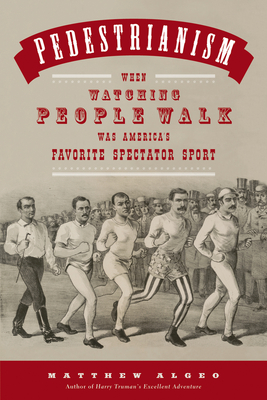Pedestrianism: When Watching People Walk Was America's Favorite Spectator Sport
Matthew Algeo

This is an oddball book that I enjoyed more than I expected to. The title describes it pretty clearly. As it turns out, in the second half of the eighteenth century, long-distance walking really did have a golden era as a wildly popular spectator sport, both in the USA and the UK. The events tended to be six-day-long races in which contestants would cover 500 or more miles, usually on a very short track, say 1/6 mile or less. These distances were fairly impressive to me, as someone reasonably conversant in the world of modern ultrarunning. Today, 100-mile races are rare but seem widely considered to be peak challenges for ultrarunners (such as the Western States 100). For comparison, the WS100 course record is a bit under 15 hours. It is pretty impressive to me that, long before modern training regimens, nutrition, etc., these athletes were able to cover that distance 5 times in the span of 6 days. Of course, the pedestrian tracks were far less challenging terrain-wise than the WS100 course, so it is definitely apples-to-oranges, but I was still pretty impressed. On the other hand, the nature of the event was completely different. Today’s ultras are very far from mass spectacle, and skew more toward personal physical and mental challenge for the participants, whereas the pedestrian races were very much big business.
One interesting theme in the book is how Americans during this era were basically starving for any kind of mass entertainment, so that even something as basically boring as watching people walk in circles for days on end could and did draw huge crowds. Thanks to industrialization, it was the first era in which the masses had some leisure time and disposable income, however meager. The author contends that the heyday of pedestrianism basically ended when baseball became popular, and even as a fan of ultrarunning, I’d say that was an improvement.